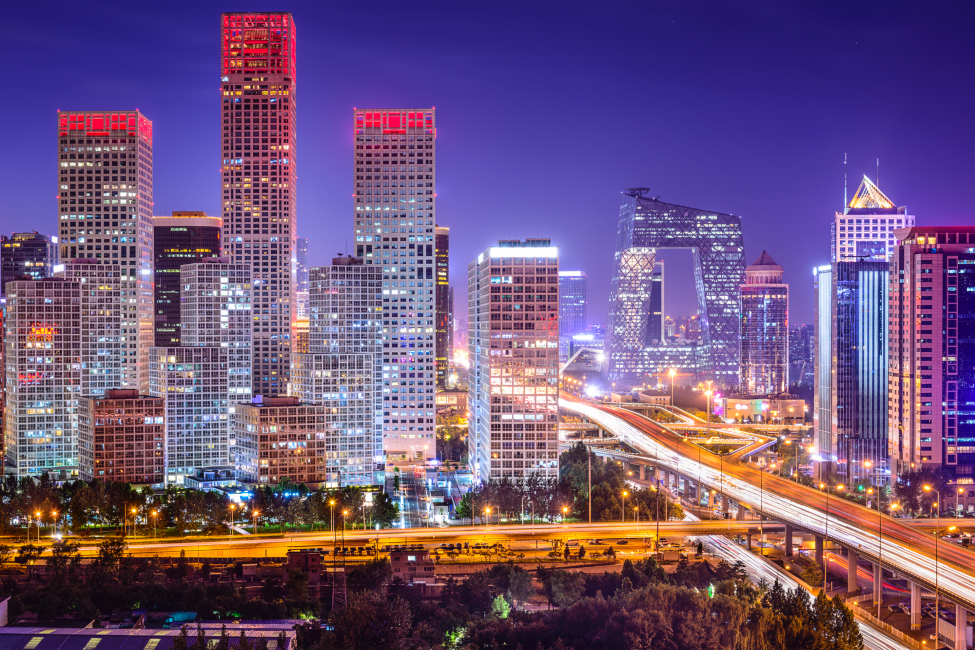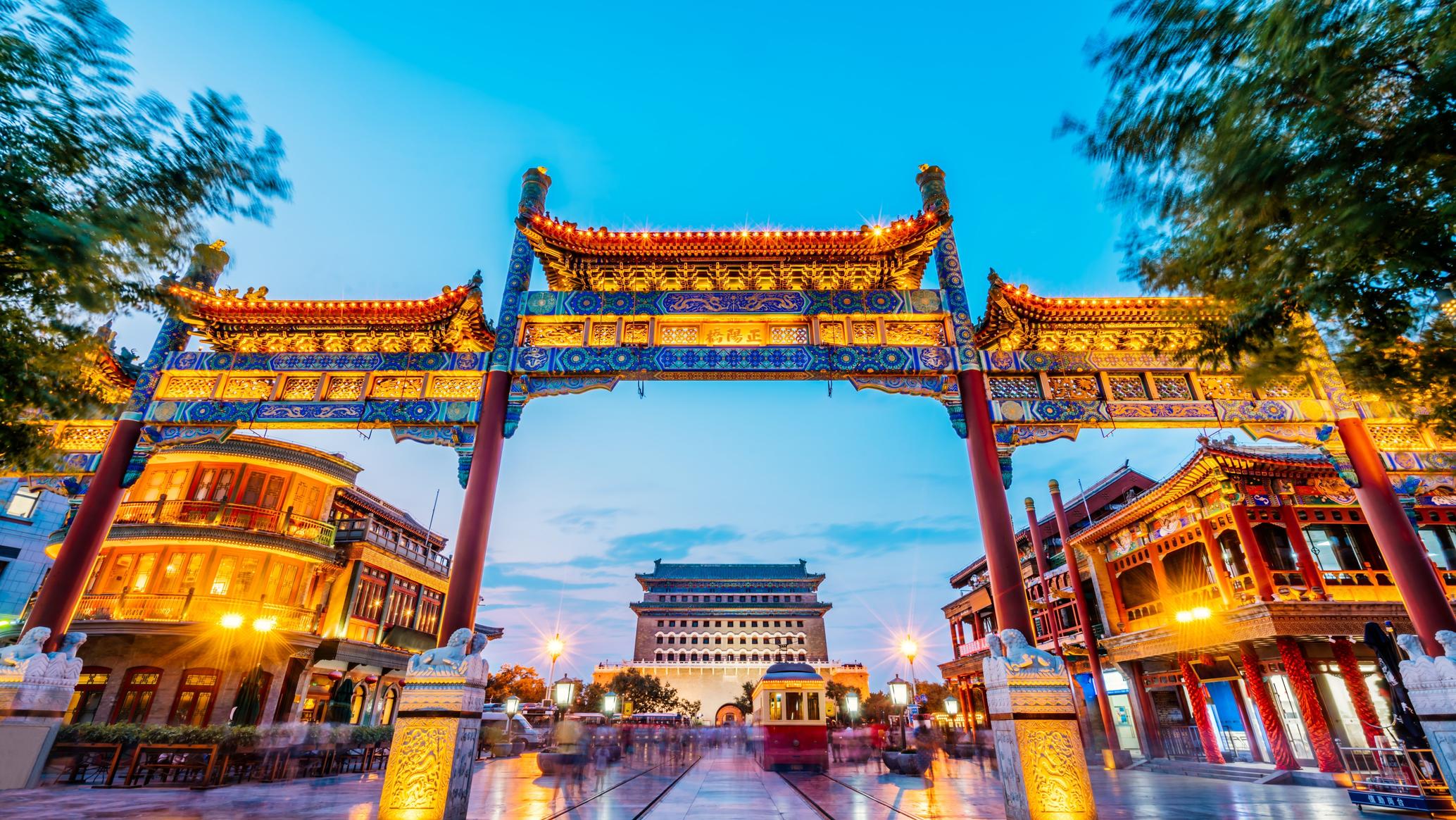Beijing (北京市) is the capital of China and one of the most populous cities in the world. It serves as the political, cultural, and educational hub of the country. With a rich history spanning over 3,000 years, Beijing blends ancient traditions with modern advancements.
🌟 Key Facts About Beijing:
- Location: Northern China
- Population: Over 21 million people
- Language: Mandarin Chinese (Standard Chinese)
- Currency: Renminbi (RMB) (¥, Yuan)
- Time Zone: China Standard Time (CST, UTC+8)
📅 Best Time to Visit Beijing:
The best times to visit Beijing are during spring (April-May) and autumn (September-October) when the weather is mild and comfortable, and the skies are clear.
✅ Spring (April-May):
- 🌸 Pleasant temperatures (10°C–25°C / 50°F–77°F)
- 🌞 Blooming flowers and fewer crowds.
✅ Autumn (September-October):
- 🍁 Crisp air and stunning fall foliage.
- 🌤️ Ideal for outdoor sightseeing with temperatures (15°C–26°C / 59°F–79°F).
🚫 Avoid:
- Winter (November-February): Cold and dry, temperatures can drop to -10°C (14°F).
- Summer (June-August): Hot and humid, with occasional heavy rains and large tourist crowds.
✈️ How to Get to Beijing:
By Air:
Beijing is served by two major international airports:
-
Beijing Capital International Airport (PEK):
- 30 km (18 miles) from downtown.
- Handles most international and domestic flights.
- Connected by Airport Express Train (about 30 minutes to city center).
-
Beijing Daxing International Airport (PKX):
- 46 km (28 miles) from downtown.
- Modern hub for international and domestic routes.
- Access via Daxing Airport Express and high-speed rail.
✈️ Major Airlines Flying to Beijing:
- Air China
- China Eastern Airlines
- China Southern Airlines
- International carriers like Emirates, Lufthansa, United Airlines, etc.
By Train:
Beijing is a major hub for China’s high-speed rail network. Key stations include:
- Beijing South Railway Station: High-speed trains to Shanghai, Xi'an, etc.
- Beijing West Railway Station: Long-distance trains to the south and west.
🚄 Popular routes:
- Beijing to Shanghai (~4.5 hours by bullet train)
- Beijing to Xi’an (~4.5 hours by bullet train)
By Road:
- Extensive expressways connect Beijing to major Chinese cities.
- Long-distance buses operate from Beijing Bus Terminal to regional areas.
🏛️ Top Attractions in Beijing
-
The Great Wall of China
- Iconic, ancient fortification stretching over 13,000 miles.
- 🗺️ Best Sections: Mutianyu (scenic, less crowded) and Badaling (easily accessible).
-
Forbidden City (Palace Museum)
- World’s largest imperial palace with 9,000+ rooms.
- 📸 Highlights: Hall of Supreme Harmony, Imperial Garden.
-
Tiananmen Square
- One of the largest public squares globally, surrounded by landmarks.
- 🌟 Must-See: Chairman Mao Memorial Hall, Monument to the People's Heroes.
-
Temple of Heaven
- UNESCO site where emperors prayed for good harvests.
- 🏮 Unique Feature: Circular, multi-tiered Hall of Prayer.
-
Summer Palace
- Lavish imperial retreat with gardens and a massive lake.
- 🚣♀️ Don’t Miss: Boat ride on Kunming Lake, Longevity Hill.
-
Beijing National Stadium (Bird’s Nest)
- Iconic structure from the 2008 Olympics and 2022 Winter Olympics.
- 🏟️ Go for: Nighttime light displays and seasonal sports events.
-
798 Art District
- A former factory turned trendy art and culture hub.
- 🎨 Explore: Modern art galleries, cafes, and boutique shops.
-
Hutongs (Ancient Alleyways)
- Traditional neighborhoods offering a glimpse of old Beijing.
- 🚴 Explore by: Walking or rickshaw tours.
🎟️ Activities To Do in Beijing
-
Climb the Great Wall
- Hike scenic stretches or take a cable car ride.
-
Enjoy a Peking Duck Feast
- Try Quanjude or Da Dong for authentic crispy duck.
-
Watch a Kung Fu or Peking Opera Show
- Red Theatre hosts spectacular Kung Fu performances.
-
Cycle Through the City
- Rent a bike to explore Beihai Park and Houhai Lake.
-
Shop in Wangfujing Street
- Famous for luxury shops and the quirky Night Snack Market.
-
Explore the Beijing Zoo & Panda House
- See giant pandas and other rare animals.
-
Take a Tea Ceremony
- Experience traditional tea culture in a local tea house.
-
Visit Jingshan Park
- Climb the hill for panoramic views over the Forbidden City.
🏨 Accommodation in Beijing
🛎️ Luxury (5-Star Hotels)
- The Peninsula Beijing – Elegant suites, central location, world-class service.
- Waldorf Astoria Beijing – Stylish with a mix of Chinese and modern design.
- Rosewood Beijing – Luxurious with a spa and fine dining options.
🏙️ Mid-Range (3-4 Star Hotels)
- Park Plaza Beijing Wangfujing – Affordable luxury near major attractions.
- Novotel Beijing Xinqiao – Comfortable and conveniently located.
- Beijing Hotel NUO – Heritage charm with modern amenities.
🏡 Budget-Friendly & Hostels
- Beijing Downtown Backpackers Hostel – Cozy and close to Hutongs.
- Peking Youth Hostel – Affordable, clean, and social vibe.
- Happy Dragon Hostel – Budget rooms and helpful local staff.
✅ Areas to Stay:
- Wangfujing: Best for sightseeing and shopping.
- Chaoyang District: Modern area, close to embassies and business hubs.
- Qianmen: Historic charm near Tiananmen Square.
🍜 Food and Restaurants in Beijing
Beijing's cuisine is rich in imperial heritage and northern Chinese flavors. From street food to fine dining, the city offers a diverse culinary experience.
🌟 Must-Try Dishes in Beijing
-
Peking Duck (北京烤鸭)
- Signature dish: Crispy roast duck served with thin pancakes, scallions, cucumber, and hoisin sauce.
- 📍 Where to Try:
- Quanjude (全聚德) – Famous since 1864, classic preparation.
- Da Dong Roast Duck – Known for leaner duck and artistic presentation.
-
Zhajiangmian (炸酱面)
- Noodles with savory fermented soybean paste, pork, and fresh veggies.
- 📍 Where to Try:
- Old Beijing Zhajiangmian House – Authentic and affordable.
-
Jianbing (煎饼)
- Savory Chinese crepe with egg, scallions, crispy wonton, and sauces.
- 📍 Where to Try:
- Local Breakfast Stalls – Popular street food option in the mornings.
-
Mongolian Hot Pot (涮羊肉)
- Thinly sliced lamb boiled in spiced broth, served with dipping sauces.
- 📍 Where to Try:
- Dong Lai Shun (东来顺) – A classic spot for authentic hot pot.
-
Baozi (包子) & Dumplings (饺子)
- Steamed buns and dumplings filled with meat, vegetables, or both.
- 📍 Where to Try:
- Xian Lao Man – Known for delicious dumplings and northern specialties.
-
Douzhi (豆汁)
- Fermented mung bean soup – a uniquely Beijing taste.
- 📍 Where to Try:
- Local Markets – Best tried by adventurous eaters.
🍽️ Famous Restaurants in Beijing
✅ Fine Dining:
- TRB Hutong – Elegant European-Asian fusion in a restored temple.
- King’s Joy – Michelin-starred vegetarian cuisine with seasonal delicacies.
✅ Casual & Local Eats:
- Haidilao – Famous for interactive hot pot and impeccable service.
- Baoyuan Dumpling House – Known for colorful, handmade dumplings.
✅ Street Food Spots:
- Wangfujing Snack Street – Try skewers, fried insects, and sweet treats.
- Ghost Street (Gui Jie) – Lively, open late—famous for spicy crawfish.
🏮 Local Culture in Beijing
Beijing is a city where ancient traditions and modern life coexist seamlessly. It’s a cultural powerhouse shaped by imperial history, Confucian values, and contemporary innovation.
🎎 Key Aspects of Beijing Culture
-
Respect for Tradition & Family
- Family and hierarchy play an essential role.
- Confucianism influences manners, respect for elders, and modesty.
-
Language & Dialect
- Mandarin Chinese (Putonghua) is the official language.
- Beijing dialect has a distinctive “er” (儿) sound at the end of words.
-
Festivals & Celebrations
- Chinese New Year (Spring Festival): Fireworks, red lanterns, and family gatherings.
- Mid-Autumn Festival: Celebrate with mooncakes and lanterns.
- National Day (Oct 1st): Grand parades and patriotic displays.
-
Tea Culture
- Tea drinking is a ritual—green, jasmine, and oolong teas are popular.
- Visit Lao She Teahouse for a tea ceremony and folk performances.
-
Arts & Performance
- Peking Opera (京剧): Colorful costumes, singing, and martial arts.
- Traditional Calligraphy & Painting: Art forms deeply linked to philosophy.
-
Social Etiquette
- Greetings: A polite nod or handshake is typical.
- Gifts: Always offer and receive with both hands. Avoid clocks (symbol of bad luck).
-
Modern Lifestyle
- Youth Culture: Influenced by Western fashion, technology, and K-pop.
- Nightlife: From upscale bars in Sanlitun to traditional hutong taverns.



